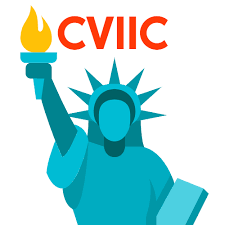It’s Not Just Hot: It’s Dangerous
As the planet’s climate changes, California is seeing hotter and longer heat waves each year. While we’re all used to warm summer months, we should expect to see multiple record-high days and record temperatures continue in the future.
Since heat is deadlier than any other weather hazard, the state of California wants you to be prepared for extreme heat events and provide resources to help you stay safe.
What is an Extreme Heat Event?
Extreme heat is two or more days and nights of unusually high heat for your region.
We all deserve to be protected, but not everyone can adapt equally, particularly those in our most vulnerable communities. If we start planning now, we can help prevent extreme heat waves from turning into emergencies for ourselves, such as older adults and young children.
So, what should you do?
- Stay Cool
Avoid being outside in the direct heat for a long time. Visit air-conditioned spaces such as your local library, shopping mall, or community center. If staying home, set your A/C between 75-80 degrees Fahrenheit, keep blinds closed, and wear loose, light-colored, lightweight clothing. - Stay Hydrated
Sip water all day and consider supplementing with sports drinks. Avoid caffeine and alcohol as they dehydrate you. - Look After Each Other
Check-in on friends and family and have them do the same for you.
Resources
California’s state agencies and departments have gathered additional resources and information to help you stay safe, cool, and connected.
Stay Informed
- Sign up for emergency alerts
- Follow your local news to stay informed on weather forecasts, including alerts on extreme heat events, and where to access your local cooling centers.
- Check the National Weather Service HeatRisk
- Learn about reducing power with Flex Alerts.
- Get tips and advice from the home country on avoiding the dangers of extreme heat.
Stay Cool and Save Money
- Find Your Cooling Center
- Check out your local energy bill assistance programor weatherization program which are free programs that can help improve your home so it retains its indoor temperature or help you pay your air conditioning bills.
- Check out your local utility for more assistance.
- Find trees to help offset the urban island-effect through your local utility.
Stay Safer in Extreme Heat
- CDC’s Frequently Asked Questions about Extreme Heat and Heat Illness
- CDPH
- The Department of Agingpublishes resources tailored for older adults and adults with disabilities for Staying Safe During Extreme Heat.
- California Heat Assessment Tool (cal-heat.org)
- National Integrated Heat Health Information System’s Heat-related Illness Resource
- Stay Safer During a Power Outage
Emergency Resources
- CDPH’s Emergency Preparedness Office provides information and resources to the public on how to stay safe during extreme heat.
- Listos California
- The 99 Calor Campaignpublishes resources in multiple languages about Heat Illness Prevention and provides external communications about Cal OSHA’s Heat Illness Prevention Standard for outdoor workers.
- If transportation is an issue, consider making a plan with friends, family, and neighbors to help you get to a cooler, safe place.
- Use 511 Real Time Traveler Information site
- Call 5-1-1 to find real-time traveler information
- Use your Regional 511 website:
- Google Dial-A-Ride to find your local transit services.
- Check with local / regional transit agencies for public transit access, including free or discounted rides during heat waves:
- American Public Transit Association (APTA): Look up California transit agencies and other info
- Transit Link: California Public Transportation Maps
- Call 211to find all essential community services, including transit.
- Use 511 Real Time Traveler Information site




